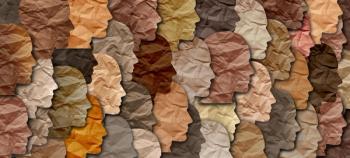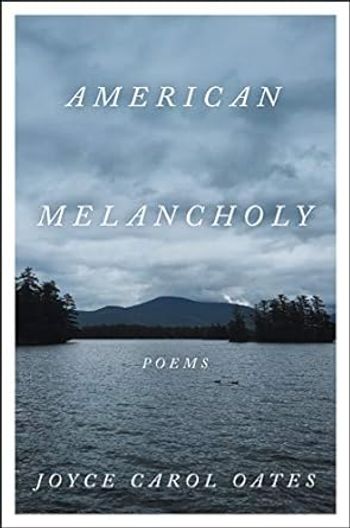
What Kind of Science Is Psychiatry?
Dr Pies offers an analysis of psychiatry’s place on the spectrum of science using “causality” and “meaning” as lenses.
COMMENTARY
Astute readers will immediately notice that the title of this piece already presumes that psychiatry is a science of some type—which, arguably, might be construed as a form of begging the question. After all, some critics of our profession—mainly, but not exclusively, in the camp of anti-psychiatry—would certainly insist that psychiatry is no kind of science at all, or alternatively, a pseudo-science. Indeed, the latter charge was leveled against psychoanalysis by the positivist philosopher, Sir Karl Popper (1902-1994), and it popped up again recently in this publication.1
Popper’s objection was that the claims of psychoanalysis could never be falsified—a principle that Popper applied to distinguish pseudoscience from genuine science.2 It is the burden of this essay to show that psychiatry is, in fact, genuine science—though a different kind of science than, say, physical chemistry or thermodynamics.
But before our deep dive into the nature of science, it is important that we call out a central misunderstanding of many critics of psychiatry. In brief, it is the notion that there is some monolithic, homogeneous entity—call it, “Psychiatry” (with a capital “P”)—whose essence can easily be identified. In truth, it would be more accurate to speak of the psychiatries—a family of medical disciplines and subspecialties that share an interest in human thought, emotion, and behavior, but differ in important ways. For example, a psychiatrist who works in a research setting investigating the properties of the NMDA receptor is carrying on quite a different activity than a psychiatrist in private practice who specializes in existential psychotherapy—despite the fact that both have MD after their names and are trained in general medicine. Within the psychiatries—as within the field of medicine as a whole—the resemblance to what are often called the hard sciences (physics, chemistry, etc.) varies considerably.
With that hurdle cleared, we are now in a position (1) to offer a rough, notional definition of a science or scientific discipline; (2) to see where psychiatry fits along the continuum of the sciences; and (3) to see how the 2 ends of the continuum differ in some of their salient properties. In particular, we will ask how the hard sciences differ from the humane sciences, using 2 rather Teutonic terms as lenses: erklaren and verstehen.
What is a Science?
The most honest reply to this question is, “Nobody has come up with an absolutely incontestable definition.” Indeed, the matter of defining science and delineating its boundaries is a topic of enormous controversy within philosophical circles. That means that when we label one discipline as science and another as pseudoscience, we ought to do so with a modicum of humility.3 (Some of us dimly remember that term; many do not). Here, then, is one provisional definition of science—or, more accurately, of the scientific method—against which we can measure the psychiatries: “Science is that field of study which attempts to describe and understand the nature of the universe, in whole or in part, by means of: careful observation; hypothesis formulation; empirical attempts to verify and falsify hypotheses; and experimental tests of predictions generated by specific hypotheses.”4
In my view, clinical psychiatry as generally understood and practiced—beginning with the psychiatrist’s initial diagnostic formulation and concluding with choice of treatment—fits reasonably well within this broad description of the scientific method. For example, consider this brief vignette:
A 17-year-old male presents with a 5-month history of command auditory hallucinations and the belief that “extraterrestrials” are monitoring his smartphone. The patient’s history is one of deteriorating social and academic function over the past 9 months, such as skipping classes; barricading himself in his room; and refusing to eat or shower. The psychiatrist performs a careful intake evaluation, observing features of the patient’s behavior, psychomotor activity, thought processes, speech patterns, etc. Based on the presenting signs and symptoms—and, importantly, on the case formulation—an initial diagnosis of schizophrenia is made. Corroboration of the patient’s history is obtained from his parents. Basic laboratory testing is done to rule out underlying or contributing medical/metabolic abnormalities; all results are within normal limits. The psychiatrist discusses antipsychotic medication with the patient and his parents, and predicts that the patient’s symptoms are likely to diminish with treatment. Subsequent follow-up over the next 6 months shows substantial reduction in auditory hallucinations and paranoid fears, with modest improvement in social function.
I believe this very condensed vignette shows that the practice of clinical psychiatry, as generally carried out in academic and hospital settings, is broadly consistent with the above criteria for a scientific discipline. This does not mean, of course, that the psychiatrist’s enterprise is scientific in the same way a geologist, nuclear physicist, or biochemist would understand the term. Indeed, the psychiatric process described is not “scientific” even in the same way a pathologist or orthopedist would use that term.
Yet I maintain that geology, nuclear physics, biochemistry, pathology, orthopedics, and yes—psychiatry—are all members of the super-category or family we call science, or the sciences. They differ fundamentally from non-scientific disciplines, such as theology—though the Scottish theologian, TF Torrance (1913-2007) would beg to differ with me.5* But within the sciences, we can discern degrees of difference, with respect to 2 key modes of explanation and understanding.
There’s Science, and Then There’s Science
The philosopher of history, Wilhelm Dilthey (1833-1911) —and later, the psychiatrist Karl Jaspers (1883-1969) —used the German terms erklären and verstehen to describe 2 ways of explaining why something occurs.6,7 Erklaren has to do with material and physical causes, and operates deterministically in nature. Verstehen, in contrast, involves meaning-based understanding. As Dilthey himself succinctly put it, “Nature we explain; psychic life we understand.”7
We can grasp the distinction between these terms if we ask a question like, “Why did Johnny raise his hand in class?” Using erklären, we might say he raised his hand because upper motor neurons in Johnny’s primary motor cortex sent an electrochemical impulse to his spinal cord, where motor neurons transmitted the message to the muscles of Johnny’s hand and arm. Correct, but not very helpful in getting at the “why” of Johnny’s action. With verstehen, in contrast, we might discern that Johnny raised his hand because he thought he knew the answer and wanted to impress the teacher so she would like him.
The sciences differ considerably with respect to these 2 modes of understanding. We can picture all the sciences on an erklaren-verstehen continuum. On the left end of the continuum, we find the so-called hard sciences: for example, classical, Newtonian physics and thermodynamics, which draw chiefly and deeply from erklären. On the right end of the continuum—as we move through the medical sciences to the social sciences, like sociology—we find a much greater emphasis on verstehen. And within the medical sciences, too, there are gradations of erklären and verstehen. Pathology, for example, relies almost exclusively on erklären—ie, on physico-cellular causation. Internal medicine is positioned somewhat closer to the right, partaking more of verstehen. And psychiatry sits still farther to the right—anchored in biology, yes, but partaking of verstehen in large measure.
This interweaving of perspectives creates a unique dialectic. Indeed, in psychiatry,
“…we often experience a dialectical tension between erklaren and verstehen. For example, the psychiatrist who is seeing a severely depressed patient may view the patient’s condition using [both] basic schemas, sometimes oscillating from one frame of reference to the other: (1) This individual’s brain function—her serotonergic system, neurocircuits, nerve growth factors, etc. —may be aberrant in some way that is causally contributing to her depression (erklaren); (2) In addition, and equally important, this person’s recent job loss has led to a profound loss of meaning and self-esteem in her life, which is clearly relevant to her current depression (verstehen).”8
The criticism so often levelled at psychiatry—that it has no lab tests, biochemical markers, or imaging techniques that reliably identify psychiatric illnesses—is in no sense an indictment of psychiatry’s status as a science. Psychiatry is, in every sense, a human and humane science, partaking of both erklaren and verstehen. It is, moreover, both a science and an art. Or, as my residency mentor, Dr. Robert Daly once quipped, “In psychiatry, you can do biology in the morning and theology in the afternoon!”
*In his book, Theological Science, Torrance argues, for example, that “we see right away a close resemblance between the road of theological inquiry and the road that modern science, eg, quantum physics, is being forced to take, in recognizing the impossibility of separating out the way in which knowledge arises from the actual knowledge that it attains.”5
Dr Pies is professor emeritus of psychiatry and lecturer on bioethics and humanities, SUNY Upstate Medical University; clinical professor of psychiatry, Tufts University School of Medicine; and editor in chief emeritus of Psychiatric Times®.
Acknowledgment: Thanks to Dr John J. Miller for his helpful comments on an earlier draft of this article.
References
1. Martin EB. Is It Time to Do Away With Psychiatry? Psychiatric Times. September 23, 2020.
2. Anonymous. Karl Popper on The Line Between Science and Pseudoscience. Farnam Street.
3. Hansson SO. Science and Pseudo-Science. The Stanford Encyclopedia of Philosophy (Summer 2017 Edition).September 3, 2009. Updated April 11, 2017. https://plato.stanford.edu/archives/sum2017/entries/pseudo-science/
4. Pies RW. Einstein & the Rebbe. Philosophy Now. 2020;138.
5. Torrance TF. Theological Science. Bloomsbury T&T Clark; 2000.
6. Ghaemi SN. The Concepts of Psychiatry: A Pluralistic Approach to the Mind and Mental Illness. Johns Hopkins Univ Press; 2003.
7. Anonymous. Verstehen vs Erklären. Communication Research.
8. Pies RW. The 5-Minute Phenomenologist: A Primer for Psychiatrists. Psychiatric Times. April 29, 2010.
Newsletter
Receive trusted psychiatric news, expert analysis, and clinical insights — subscribe today to support your practice and your patients.













